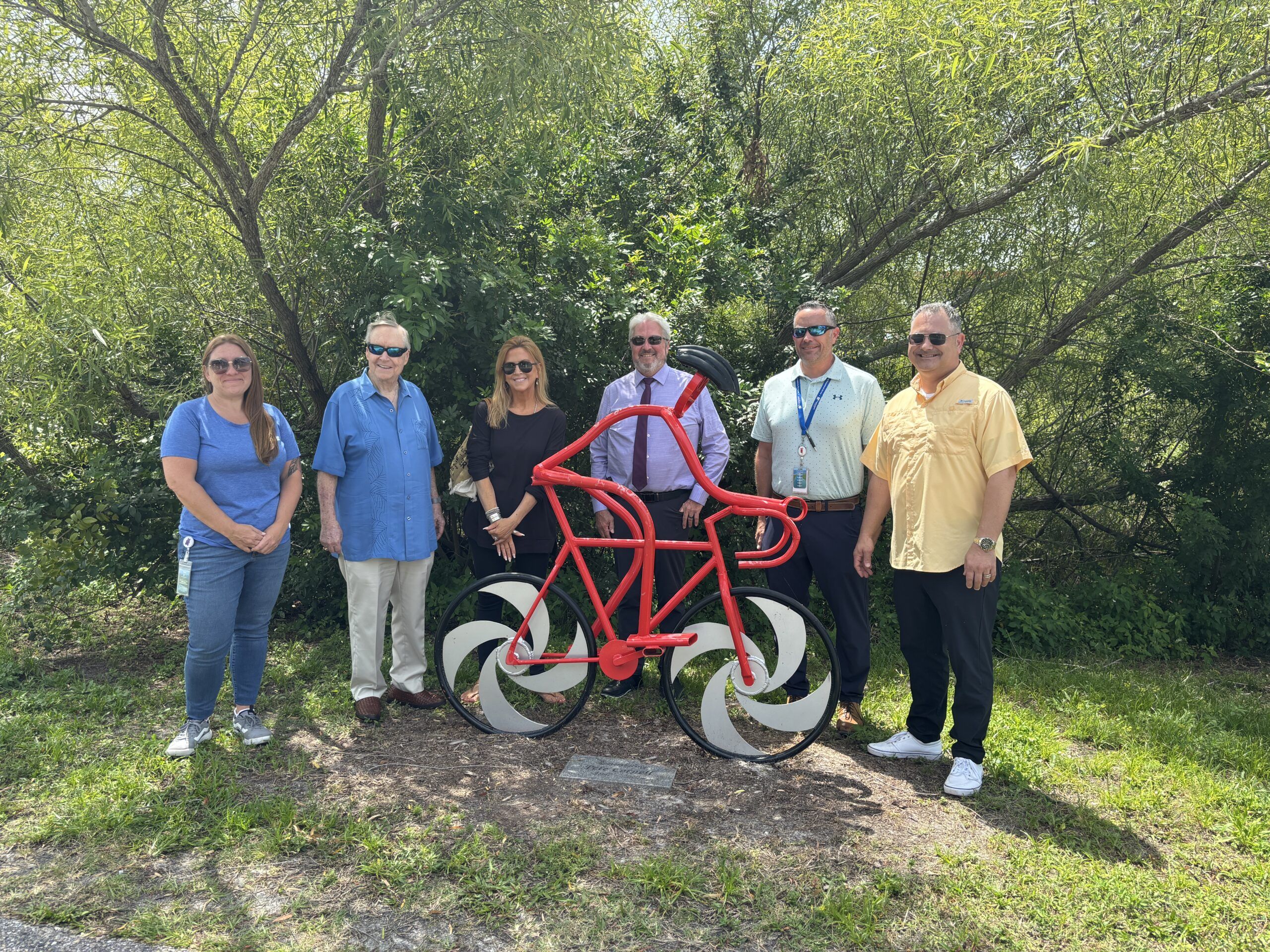Charlotte County Parks tour highlights repairs, upgrades

The Charlotte County Parks and Recreation Advisory Board replaced their regular meeting with a tour of a few of the west county parks on Tuesday, April 2.
“People have lived here for years and don’t even know this is here,” said Charlotte County Public Relations Manager Breanna Benevenga, as the group toured one of the west county parks, Cape Haze Pioneer Trail.

The tour, led by Tommy Scott, Charlotte County Director of Community Services, visited three locations, beginning with the El Jobean fishing pier, which is part of the same railroad right-of-way as the Gasparilla Island Conservation and Improvement Association’s Bike Path, and continues on as the Cape Haze Pioneer Trail Park.
The pier sits atop the old railroad trestle that was originally used to cart phosphate out of Boca Grande. It parallels El Jobean Bridge and it is a popular fishing spot, Scott said. The county has recently added recycling bins made of PVC through the Keep Charlotte Beautiful organization, so fishermen can safely dispose of line.

The tour also visited Lemon Bay Sunrise Rotary Park, which was once a mobile home park before Charlotte County purchased the land. After Hurricane Ian, it took the county anywhere from a couple weeks to eight months to reopen all of the parks, Scott said. They are still working on getting everything back to pre-Ian condition in some parks; however, as repairs continue, they have also found ways to improve the locations.
One of the additions to Sunrise Park is the two pavilions overlooking the water. People would come to this spot during their lunch breaks and not have anywhere to sit, so they decided to add the shaded picnic benches to the park, Scott said.
Another new feature in Sunrise Park is the life jacket loaner station. Through the Sea Tow Foundation, which promotes boating safety and education, the park now has free life jackets for anyone to borrow for a day on the water, especially if, for example, a group has one more passenger than life jacket in their boat, Scott said.
So far, life jacket loaners have been returned to their station, and boaters have been abiding by this honor system, he added.
The last stop on the tour was the Cape Haze Pioneer Trail Park, which follows the old Charlotte Harbor and Northern railroad route that once serviced the early phosphate industry, ending at Gasparilla Island. The trail, which is about 8.5 miles today, runs parallel to County Road 771/Gasparilla Road. The trail ends at Coral Creek Club. The county recently installed two bike pumps at the trailhead in partnership with a local bike club.
The north end of the trail begins in what was once the town of McCall, which was plotted in 1909, and named for C.B. McCall who was the general freight and passenger agent at Boca Grande. A bunkhouse, which was built in 1907 for single male railroad employees, was relocated to the Cape Haze Pioneer trailhead, where it sits fenced in now. The building is framed with Florida yellow pine, which proved to be resistant to the destruction of Hurricane Ian.

Charlotte County is still deciding on what to do with the historic building, and is waiting until after a structural survey is complete to make a decision. In the meantime, it seems as though many sizable iguanas have decided to take up residence under, and in, the old boarding house.









